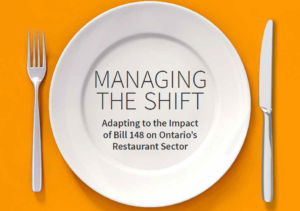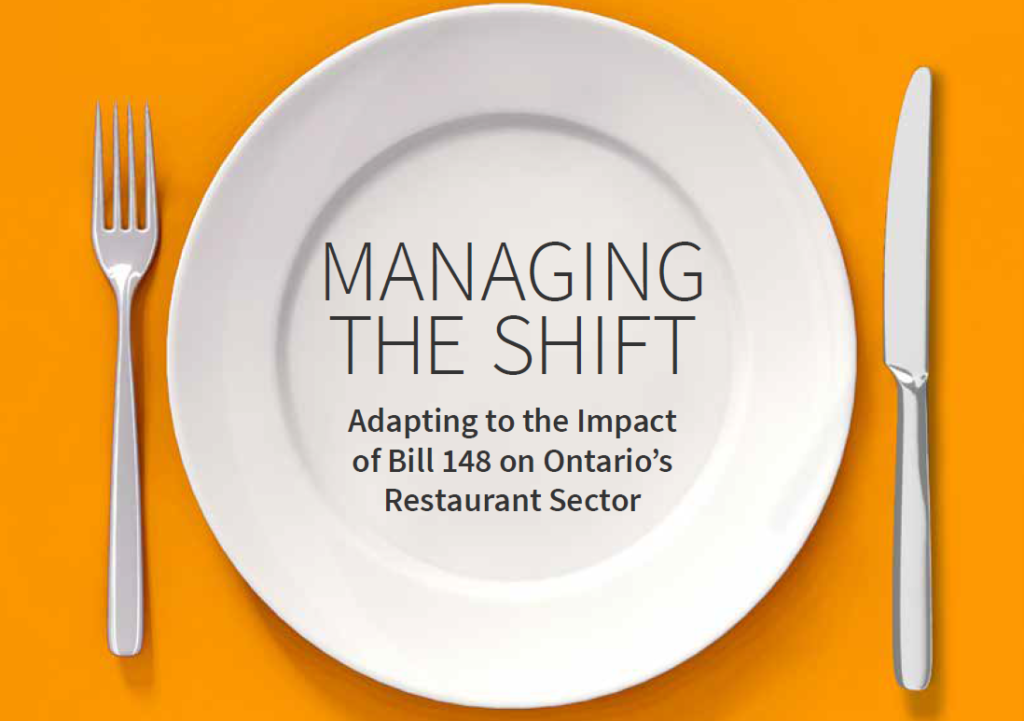 The intense and varied reactions to several provinces and territories raising their minimum wages in recent years provided ongoing media fodder and much speculation on the outcomes, both short and long term.
The intense and varied reactions to several provinces and territories raising their minimum wages in recent years provided ongoing media fodder and much speculation on the outcomes, both short and long term.
In late 2017, Ontario passed new legislation (the Fair Workplaces, Better Jobs Act, also known as Bill 148) that changed a number of labour laws, including a January 1, 2018, increase of its general minimum wage from $11.60 to $14.00 per hour and its liquor server wage from $10.10 to $12.20 per hour.
That February, Archan Consulting published a report on the early trends and impacts of Bill 148 on the restaurant sector in Ottawa. This led to an Ontario-wide study, surveying full- and limited-service restaurants on the impact of the new legislation, with a focus on independently owned businesses.
Released today, Managing the Shift: Adapting to the Impact of Bill 148 on Ontario’s Restaurant Sector analyzes the responses of over 300 restaurants to this study. The report includes both quantitative and qualitative data, exploring information provided through a web-based survey and one-on-one telephone interviews.
The study took place over nine weeks in the fall of 2018, meaning responses to questions about future impacts reflect owners’ outlooks before and after the announcement of the newly elected Conservative government’s decision to not roll out a planned second increase in 2019.
Managing the Shift examines the effects of Bill 148 on three key areas in Ontario’s restaurant industry:
- Labour markets
- Managerial and operations issues
- Profitability
The report details much more than the impact of the wage increase on business expenses. To provide a thorough picture of the business and labour changes experienced in the initial year of the increase, the study sought feedback on the following topics:
- Impact on cost structure: How much of an increase in operating costs have restaurants experienced? What portion of the cost increases are attributable to the wage increase alone, and how have the rest of the changes (e.g., to protected leave categories, vacation pay, and others) impacted costs for restaurants?
- Impact on staffing and employee mix: How was the full-time and part-time staffing mix impacted, along with overall staffing levels? What other staffing changes have restaurants made to reduce labour costs (e.g., shifting workload from hourly to salaried staff)?
- Measures to save labour hours: Has there been a reduction in the number of shifts and hours available to staff? Have restaurants changed their hours of operation?
- Impact on recruitment: Has Bill 148 influenced recruiting and hiring preferences for certain types of workers? Have proprietors experienced changes in quality or volume of applications for vacant positions? Has there been an impact on retention and turnover?
- Management changes: Are tip-out policies changing in response to the new wage scale? Have proprietors experienced pressure from staff not earning minimum wage to raise wages for senior or skilled positions? How has the legislation affected absenteeism, disciplinary processes, and relationships between various positions in restaurants?
- Menus and pricing: How much have menu prices increased since the legislation was introduced? Are price increases happening all at once or gradually throughout the year? What other effects has the new cost structure had on menus (e.g., changes to ingredients or portion sizes)?
- Profitability: What impact has the legislation had on profitability in 2018?
- Upside or potential benefits: Have staff adopted a new approach to their work (e.g., more professional, motivated, dedicated)? Are employers or managers noticing that staff appear more invested in their jobs? Is the new wage scale attracting a higher calibre of applicant to the restaurant industry?
- Forecast for 2019: What do proprietors forecast for 2019 regarding staffing and profitability? What are the hopes and concerns of restauranteurs going into 2019?
Download Managing the Shift to view the full results and analysis, as well as to read business owners’ experiences in their own words.
Managing the Shift was the result of collaboration between several organizations. Tourism HR Canada would like to extend a special thank you to the Tourism Industry Association of Ontario (TIAO) and the Ontario Restaurant Hotel & Motel Association (ORHMA) for their efforts reaching out to their members and recruiting participants for this research. We would also like to thank all the participating restauranteurs who provided the valuable time and effort that made this report possible.
Subscribe to Tourism HR Insider for future analysis of changes impacting tourism’s labour market.

